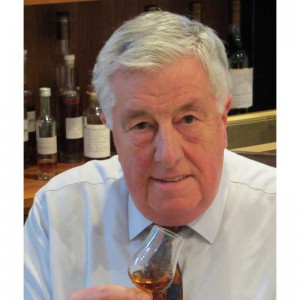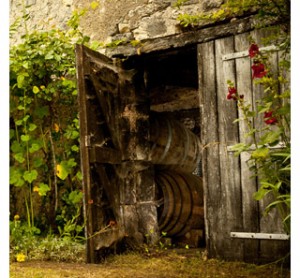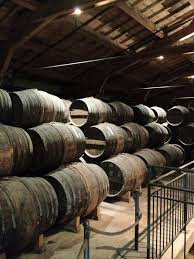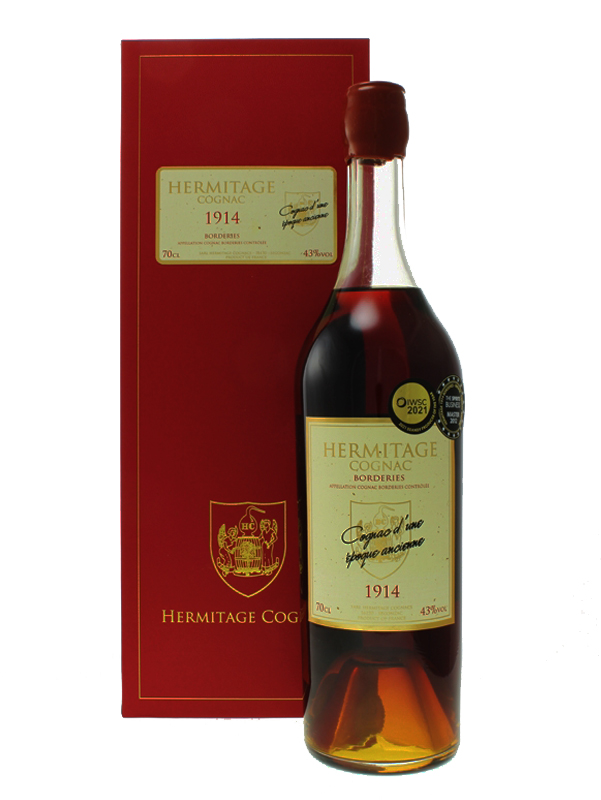The Rancio
 Professionally, as an industry assemblage of blenders, cellar masters, connoisseurs, distillers and negoçiants, our aim is to provide the very finest cognacs we can for each market sector. We know that there is no alternative to long ageing in oak barrels to enhance the distillers’ skills and provide the flavour and richness (Rancio) that is so desirable. Perhaps it was by accident in the 16th and 17th centuries that the chemical changes taking place between wood and spirit were noticed. Over the centuries the effects of ageing have been recorded and gradually formed the criteria by which the standard of a modern cognac is defined.
Professionally, as an industry assemblage of blenders, cellar masters, connoisseurs, distillers and negoçiants, our aim is to provide the very finest cognacs we can for each market sector. We know that there is no alternative to long ageing in oak barrels to enhance the distillers’ skills and provide the flavour and richness (Rancio) that is so desirable. Perhaps it was by accident in the 16th and 17th centuries that the chemical changes taking place between wood and spirit were noticed. Over the centuries the effects of ageing have been recorded and gradually formed the criteria by which the standard of a modern cognac is defined.
 Perhaps also by accident, after discoveries of old barrels in the corners of family cellars, it was found that some of the oldest cognacs had acquired a sort of maderization and developed an interesting richness. This effect was noted in some cognacs after only 20 – 30 years of barrel ageing but those from the Champagnes took longer to develop it. Charles Walter Berry of Berry Brothers is said to have described this character of fullness and fatness in some brandies as rankness (rancio), an effect also noted by some tasters of Roquefort cheese.
Perhaps also by accident, after discoveries of old barrels in the corners of family cellars, it was found that some of the oldest cognacs had acquired a sort of maderization and developed an interesting richness. This effect was noted in some cognacs after only 20 – 30 years of barrel ageing but those from the Champagnes took longer to develop it. Charles Walter Berry of Berry Brothers is said to have described this character of fullness and fatness in some brandies as rankness (rancio), an effect also noted by some tasters of Roquefort cheese.
 It is the oak barrels which produce this most agreeable ‘rancio’. Oak has little or none of the resinous substances found in other woods (that can pollute the spirit with undesirable tastes) and it provides a number of useful elements: tannins the best known comprise a mere 5% and lignin, equally vital, a further 23%. Much of the rest is made up of the relatively neutral hemi-cellulose which gradually dissolves in the maturing spirit and imparts an agreeable sweetness found in older cognacs. The tannins and lignins dissolve at different rates so after 5 years 10% of the lignins and 20% of the tannins will have been absorbed. After ten years this will have doubled but in later years the rate of absorbtion will slow. Conventional wisdom says that in some cases it takes 50 – 80 years to absorb all the tannins in the wood.
It is the oak barrels which produce this most agreeable ‘rancio’. Oak has little or none of the resinous substances found in other woods (that can pollute the spirit with undesirable tastes) and it provides a number of useful elements: tannins the best known comprise a mere 5% and lignin, equally vital, a further 23%. Much of the rest is made up of the relatively neutral hemi-cellulose which gradually dissolves in the maturing spirit and imparts an agreeable sweetness found in older cognacs. The tannins and lignins dissolve at different rates so after 5 years 10% of the lignins and 20% of the tannins will have been absorbed. After ten years this will have doubled but in later years the rate of absorbtion will slow. Conventional wisdom says that in some cases it takes 50 – 80 years to absorb all the tannins in the wood.
Chemically, rancio derives from the oxidation of fatty acids in the spirit into ketones which produce the richness felt on the palate. It is reminiscent of an old madeira wine, a sort of rich pineapple mustiness which we all hope to find when tasting old cognacs. But this is only one of many chemical reactions and their effect on the palate. One team of scientists, led by Dr Heide, detected 334 ingredients in cognac; 24 acetals (ethylates of aldehyde and alcohol), 27 acids, 63 alcohols, 34 aldehydes, 25 ketones, 77 esters, 19 ethers, 3 lactones, 8 phenols and 44 diverse substances. Many of these substances have still not been separated and analysed; some form an important part of the mix; some strongly influence the taste. For example, ethyl compounds are strongly reminiscent of rotten fruit. Finding the right combination of these elements in an old cognac does not always happen but when it does you will know that you have tasted a very fine cognac that may have started its life as much as a hundred years ago. Perhaps the very best example of ‘rancio’ we can offer is the Hermitage 1914 Borderies.
Read more Technical Topics on our Brandy Education page.

